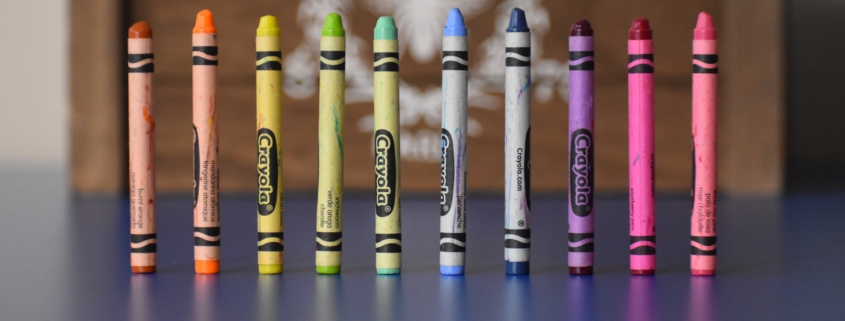How to Start Your Artistic Journey: A Beginner’s Guide to Exploring Creativity Without a Background in Arts
Written by Courtney Phillips
Art has always captivated me—whether displayed on the walls of cafes and restaurants, in shopping centres, on the internet, or in books and magazines. I would often pause to consider what drew me to a particular piece—the emotional connection I felt to it. I admired the ease with which others sketched and painted, and it inspired me to try creating like they did. However, my attempts left me discouraged and frustrated. I felt as though I would never be able to produce the artwork I admired and that I didn’t have an “artistic mind”—as if creativity and skill were something you were born with. Coming from a background in the sciences, the art community felt impenetrable, guarded by unspoken rules, intimidating techniques, and expensive supplies. Even so, the desire to create never left me.
My turning point happened during a mom’s night out at a friend’s house. She had purchased some paint-by-number canvases for about five dollars. We relaxed, chatted, and painted. I remember telling her how much I loved the feel of the brush and seeing the picture come to life, but that I wasn’t creative enough to paint on a blank canvas. After that night, I pulled out that painting every day, going over it several times to clean up lines and build up layers. When it was complete, I felt happy. It was cheap, simple, and far from professional, but the experience stayed with me.
Wanting more but uncertain about my skill, I gravitated toward the fast-growing social media trend of adult colouring. At first, I was overwhelmed by tutorials and advice on the “right way” to colour—tips on improving my art, using supplies correctly, and avoiding mistakes. Self-doubt crept in as I watched videos of beautifully coloured pictures filled with intricate patterns, details, and shading. It threatened to shut me down again until I realized I didn’t need to follow every piece of advice—nor was it practical to do so. The people in those videos had already taken their own journey, discovering what they enjoyed and what worked for them. I came across a few artists who emphasized that you just need to create something, anything, every day. That became the advice that pushed me forward.
I started by printing free colouring pages from the internet and coloured using my children’s art supplies with no pressure to create something unique or impressive. I experimented with paint, watercolour, markers, and coloured pencils. Through my exploration I found myself more drawn and emotionally connected to artwork done in coloured pencil, stories unfolding in my mind as I examined them. Captivated by the depth and detail of shading, layering, and blending, I experimented with these techniques and gradually developed my own style, drawing from various methods I encountered. Encouraged by my progress, I purchased a budget set of colored pencils to practice with and later upgraded to a premium set as my skills improved.
I keep my finished pages together as a sort of sketchbook—even the practice ones. I often flip through them, remembering the frustration, satisfaction, or the nostalgia a scene brings back. A set of leaves that finally looked the way I envisioned after sixteen tries; moss-covered trees that remind me of the earthy smell during a fresh rain; a cozy kitchen scene that makes me cringe until I remember that I was still learning and experimenting with basic colour theory; the comfort and safety of a baby dragon curled up in the arms of a young girl; the wisdom and trust in the eyes of a fairy.
As I practiced and improved, I started to feel less intimidated and more confident. I could look at a piece of artwork and begin to understand its shapes, colours, lines, and techniques. Finally, I felt ready to face a blank page and motivated to learn how to draw.
Once again, I sifted through countless tutorials and advice on learning to draw, focusing on what interested me—how I preferred to hold and use the pencil and how everything could be broken down into basic shapes. I sketched everyday objects around me: a bottle, a hard drive, Lego, a toy car, a makeup brush, and the ladder at the corner of the pool during my son’s swim lesson. I borrowed a basic book on drawing animals from the library and attempted a bird (several times). Eventually, I found the courage to draw and colour a robin from a reference photograph. For the first time, I felt like I had created a piece of original artwork, and I was now ready and excited to experiment with realism and landscapes.
Since starting my artistic journey, my daily routine has transformed. Instead of being half asleep dealing with the chaos of getting my kids ready for school, I now wake up an hour earlier, sip a warm coffee, listen to calming music, and colour. It has become the best part of my day. And I’ve come to realize that art isn’t about the final product—art is the process of expressing, creating, and evoking emotions, especially within yourself. Art is an expression of who you are, in whatever form you choose, even if that art is a paint-by-number from the local dollar store or a page from a colouring book. You don’t need a Pinterest-worthy studio, a wall of pristine art supplies, or a degree from a university to be an artist—art is for everyone. All you need is inspiration and a starting point. Then, experiment, grow, and enjoy the process at your own pace.


